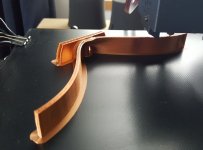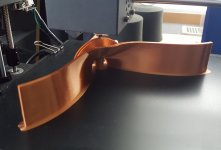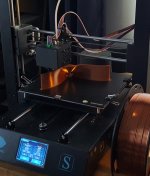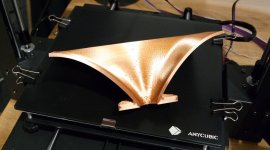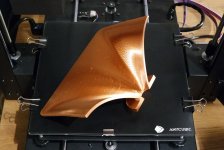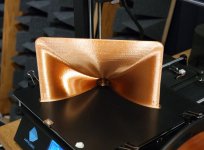B&C DCX464
perhaps try the new dcx464 , could get close to 300hz
DCX464 Coaxials HF - B&C Speakers
B&C DCX464
perhaps try the new dcx464 , could get close to 300hz
DCX464 Coaxials HF - B&C Speakers
B&C DCX464
I used Virtual box when I had a Mac and for programs like this that are not CPU intensive it worked a treat. I had a couple of old programs that would only work with XP so I had a version of that too. You only need enough hard drive space for the OS and a little bit more as you can access all the files on your other drive as if it was on a network.I don't have a Windows computer and for some reason I couldn't get it to work in Parallels and gave up.
I thought that coaxial CDs do weird things with the wavefront when the two waves converge, hence less desirable?perhaps try the new dcx464 , could get close to 300hz
I have not. I don't have a Windows computer and for some reason I couldn't get it to work in Parallels and gave up.
FWIW, Ath4 and ABEC3 (as well as the new AKABAK release) work just fine on Linux with Wine.
That's one of the reasons I'd opt for a larger driver that can be used lower in frequency. With a large mouth flare (doesn't necessarily imply a larger waveguide) there's almost no midrange narrowing and I don't think that the "sparkle" has any connection with a frequency response extension to 20 kHz.
My favourite approach is 2" driver into a horn/WG and then top it with a super tweeter, possibly quite steeply filtered (4th order Bessel high pass - yes Bessel has a bit of ripple but who cares at around 16K, but it has no phase rotation at the cut frequency). if I really need that sparkle.
Looking good so far 🙂1:2 Tritonia model ready to print -
Attachments
Last edited:
[...] we commonly see 2 inch drivers are not capable of exceeding useful output past 14kHz.
Who cares? You can use 2" drivers starting from lower frequencies than 1" frequencies, so you can get a better coverage of the core frequency range (mids to the treble). Then you can add a sharply filtered super tweeter if you really need the top treble (I use a Visaton TL16-H with a 4th order Bessel at 16K to cover 16K-35K, even though at about 2db less than the rest - it gives perfect air without harshness).
This is also funny: Today, solely by mistake, I tried something I didn't want (what could be considered as an error), but hey, the result is one of the best I have seen -
What would be this shape? What is its peculiarity?
I think that shape gave rise to the Tritonia waveguide you see above, with about the same performance without looking so weird.What would be this shape? What is its peculiarity?
Looking good so far 🙂
Is that an ANYCUBIC i3 Mega S and if so, would you recommend it?
//
I'm no experienced printer, so I can't really compare. This is my first, it was cheap and I supose it's nowhere as good as the more expensive stuff. But the only thing I had to do was to rectify the axes a bit (drill a bit bigger holes, etc.), otherwise it simply prints what I need. No issues but maybe you have to be lucky about a particular piece, I don't know.
I think one belt is too loose but I always forget to fix that.
I think one belt is too loose but I always forget to fix that.
Last edited:
I'm thinking about releasing the code as an open source (C++ classes) - I'd love to see it implemented with a proper GUI and a real-time visualization of the waveguide being designed. Initially I thought that I will be able to write it myself but now I see I'm really not as it takes much more time than I'm actually willing to give it (now, after I have finally found my waveguide!). Would there be any volunteers to make this happen?
I can help with porting to other operating systems (even if just for the CLI version).
Tritonia in vertical and diagonal (infinite baffle):
I wonder how a Tritonia would work with a coaxial driver, such as the B&C DCX50 (of the newer DCX462/464). Is there a reason such a driver would not work? The DCX50, for instance, has a minuscule cone for the tweeter inside.
What I really like is the shallow depth. This would allow the waveguide to be flush with the rest of a cabinet and almost get time alignment between a woofer and the driver...
Only a coarse calculation for now (still took over 1 hour) -
Ignoring the obvious numerical issues, it's probably not bad.
There are two different pictures for "triton freestanding + rollback" and one shows falling sound pressure and the other one nearly constant: what is the actual difference?
One is the raw response the other is generated from the normalized polar, and represents what it could look like if EQ'd flat to the normalizing axis.
Looking great, like the color.Yes! 🙂
Not perfect but probably good enough.
I just ordered an anycubic chiron so I can print bigger ATH horns 🙂
I really want to do a synergized ATH horn.
What do you guys recommend as best for this application?
Axisymetric or Tritonia synergy horn?
What do you guys recommend as best for this application?
Axisymetric or Tritonia synergy horn?
- Home
- Loudspeakers
- Multi-Way
- Acoustic Horn Design – The Easy Way (Ath4)
